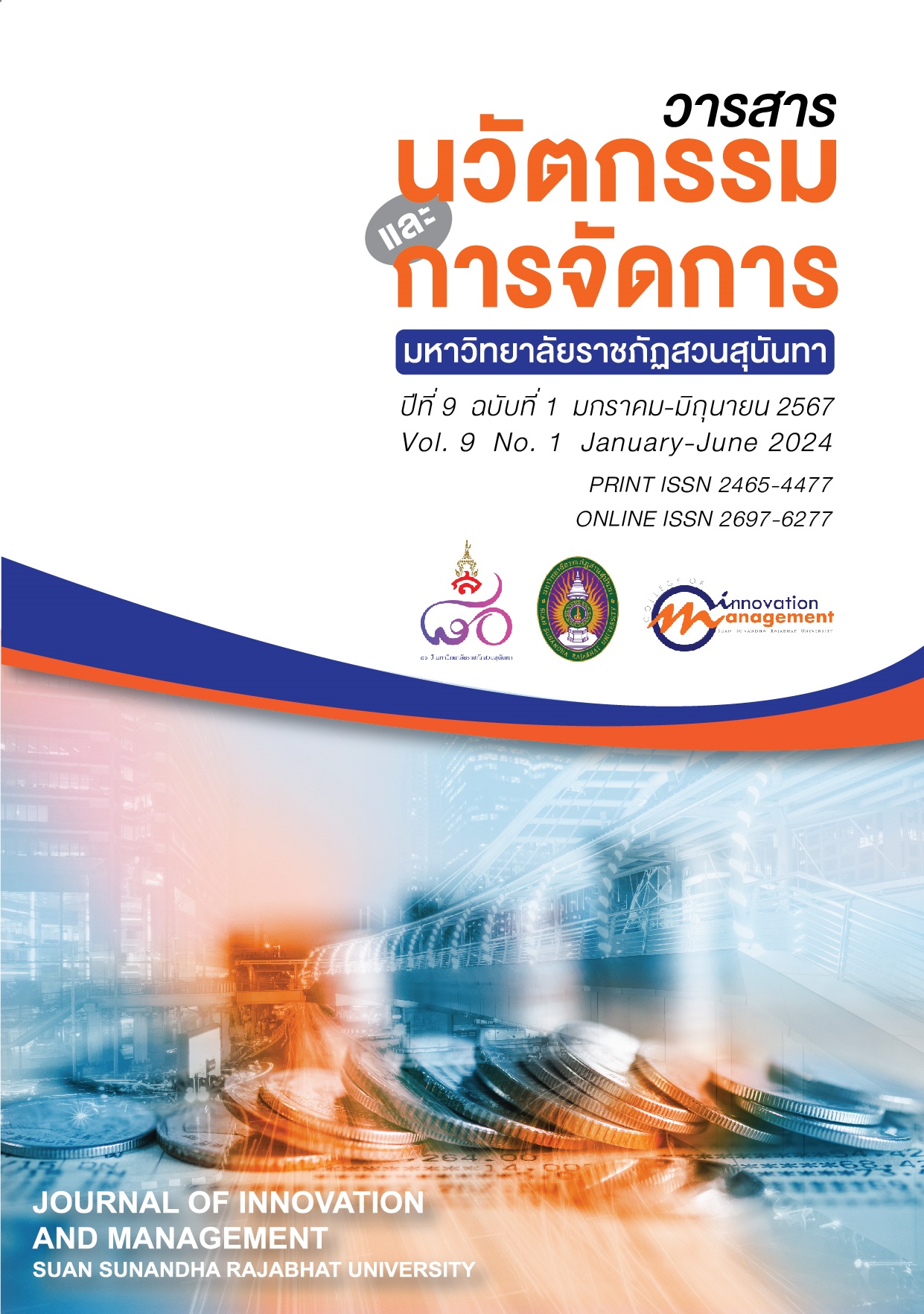Ariyasacca 4 and SEM
Keywords:
Ariyasacca 4, SEM, Social Science ResearchAbstract
The three objectives of this academic paper are (1) to explain the concepts of Ariyasacca 4 (the Four Noble Truths) and Structural Equation Model (SEM), (2) to explain the similarities and differences between Ariyasacca 4 and SEM, and (3) to propose the guidelines for applying Ariyasacca 4 and SEM in social science research. The main points in the article include the concepts of Ariyasacca 4 and SEM, the similarities and differences between Ariyasacca 4 and SEM, and the guidelines for applying Ariyasacca 4 and SEM in social science research. Ariyasacca 4 is a Buddhist principle that can be applied in educational research while SEM is an advanced statistical analysis technique. The two concepts are different but related in terms of cause-and-effect analysis that can be integrated and applied in the design of social science mixed-methods research.
References
Chatmethee, P., Siriwat, C., Srinok, S., and Suwanphuma, S. (2018). Using the method Teaching the Four Noble Truths in Buddhism Grade 6 students at Ban Lak Roi School Nakhon Ratchasima Province. Journal of Educational Review Faculty of Educational in MCU, 5(1), 54-65. (in Thai)
Creswell, J. W. (2005). Educational Research: Planning, Conducting, and Evaluating
Quantitative and Qualitative Research. 2nd Ed. Upper Saddle River, New Jersey: Pearson Education.
Creswell, J.W., and Plano Clark, V.L. (2007). Designing and conducting mixed methods
research. Thousand Oaks: Sage.
Homfung, C. and Wechasart, K. (2012). Solving conflict problems among characters in spoken Dramas in the Royal Prose Writings of His Majesty King Mongkut: Analysis with the Four Noble Truths. Journal of Silpakorn Educational Research, 4(1), 212-225. (in Thai).
Jöreskog, K.G. and Sorbom, D. (1993). LISREL 8: User’s Reference Guide. Chicago: Scientific Software International.
Kujinda, T., Inudom, W., and Phumiphan, S. (2016). Teaching and learning model according to the method of the Noble Truths using collaborative information and communication technology. Journal of Education Khon Kaen University (Graduate Studies Research), 10(4), 84-90. (in Thai)
Mitaree, N., Thanapanyo, S., and Ngamprakon, S. (2023). Learning management in the form of the 4 Noble Truths. Journal of Bovorn Multi-Education and Human Social Sciences, 4(1), 27-37. (in Thai)
Na Wichian, N., Kittisaknavin, C. and Deesawat, N. (2018). The 4 Noble Truths and organizational development. Journal of Humanities and Social Sciences Thonburi University, 13(1), 165-174. (in Thai)
Phanphruek, S. (2019). Improving the quality of education through national educational
testing based on the Four Noble Truths. Journal of Education Khon Kaen University, 42(1), 1-20. (in Thai)
Punyakamo, P. (2024). Abbot of Suphanburi Province. Interview, 21 February 2024. (in Thai)
Royal Gazette. (2019). Higher Education, Science, Research and Innovation Policy Council Act
National Year 2019 (Volume 136, Section 57). [Online]. Retrieved on 20 February 2024 from: https://www.mhesi.go.th/index.php/all-legal/74-act/2204-sdgfg.html (in Thai)
Suwaphong, N., Thinsandee, T. and Phodam, N. (2020). Developing morality and ethics in
students in Northeastern Basic Educational Institution by applying the principles of the Four Noble Truths in relation to student morality projects. Academic Journal of Mahamakut Buddhist University Roi Et Campus, 9(1), 430-441. (in Thai)
Wikipedia. (2024). The 4 Noble Truths. [Online]. Retrieved on 22 February 2024 from: https://th.wikipedia.org/wiki/อริยสัจ_4 (in Thai)
Wiratchai, N. (1999). Lisrel model: statistical analysis for research. 3rd rd. Bangkok:
Chulalongkorn University. (in Thai)
Yasachato, S., and Piyasilo, S. (2023). Creating happiness from Dhamma principles of
the 4 Noble Truths. Journal of Legal Entity Management and Local Innovation, 9(3), 2023. (in Thai)
Yurarach, S. (2016). The Development of Causal Relationship Model of the Utilization of
Quality Assessment Results in Developing the Private Higher Education Institution. Journal of Education of STOU, 8 (2), 87-107. (in Thai)
Downloads
Published
How to Cite
Issue
Section
License
Copyright (c) 2024 Journal of Innovation and Management

This work is licensed under a Creative Commons Attribution-NonCommercial-NoDerivatives 4.0 International License.
See Publication Ethics https://so03.tci-thaijo.org/index.php/journalcim/Ethics






